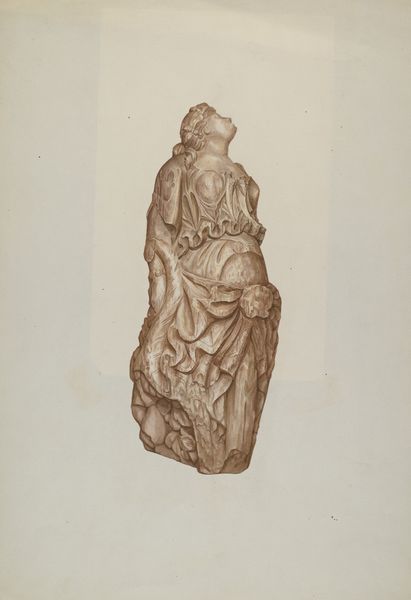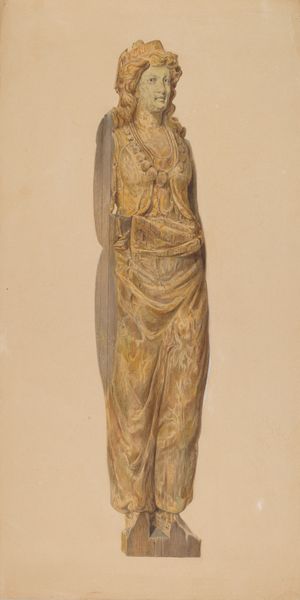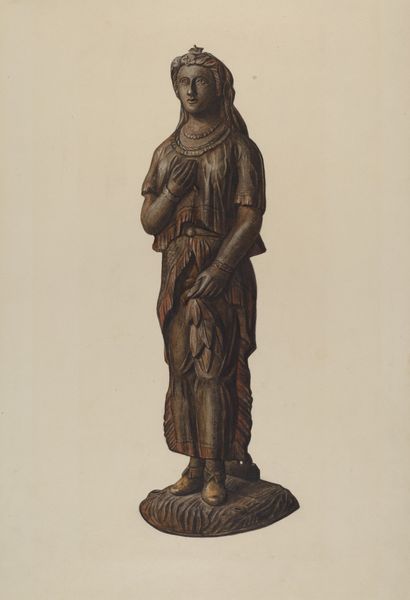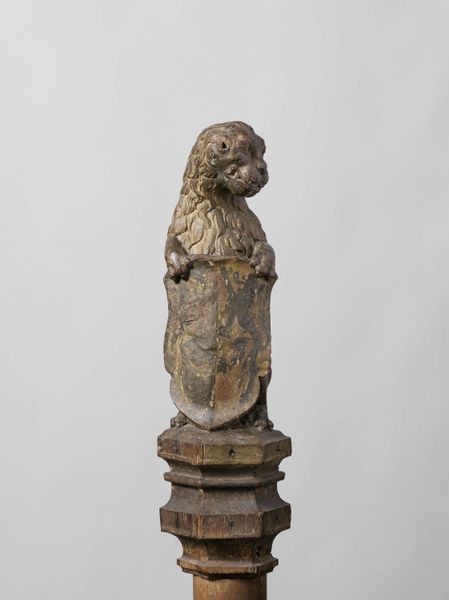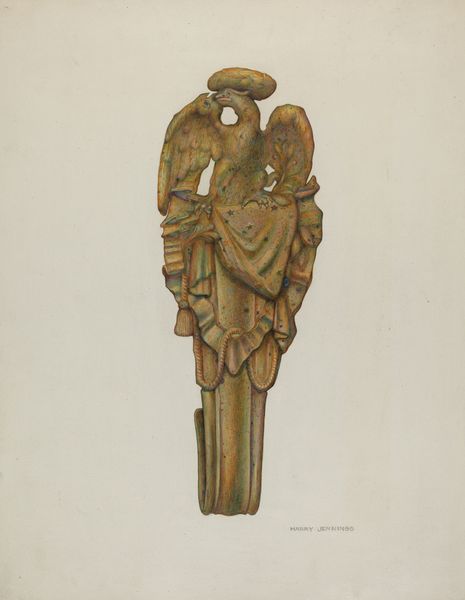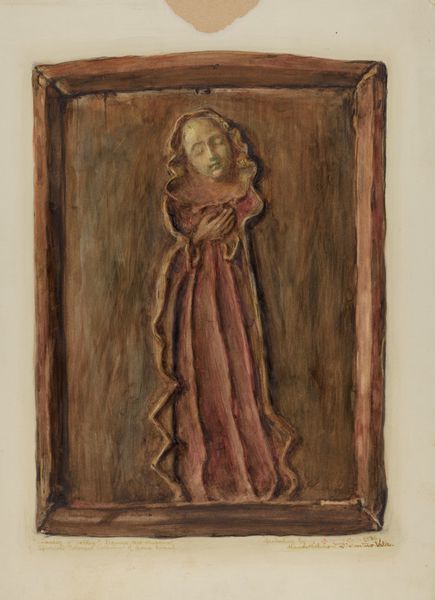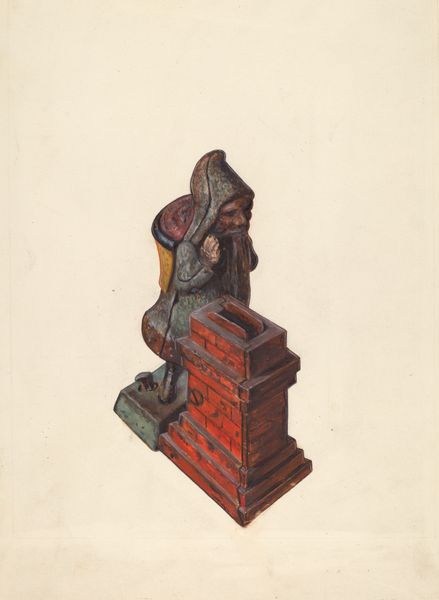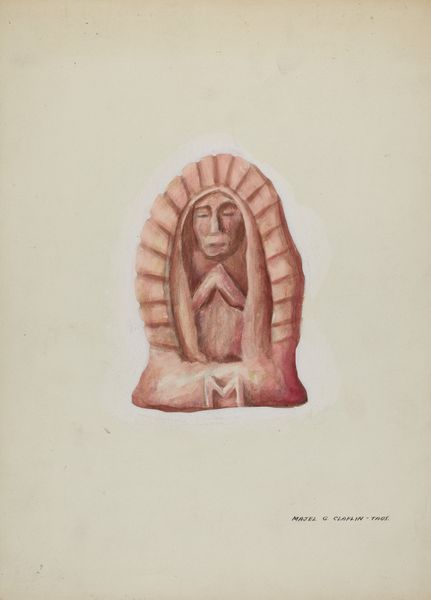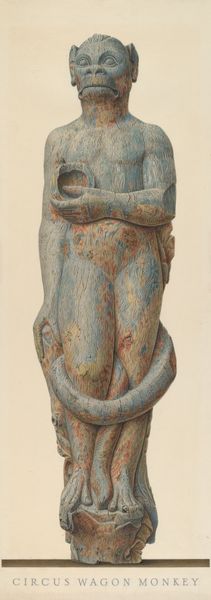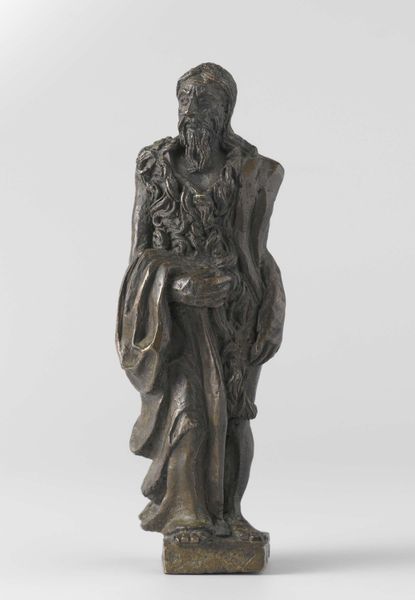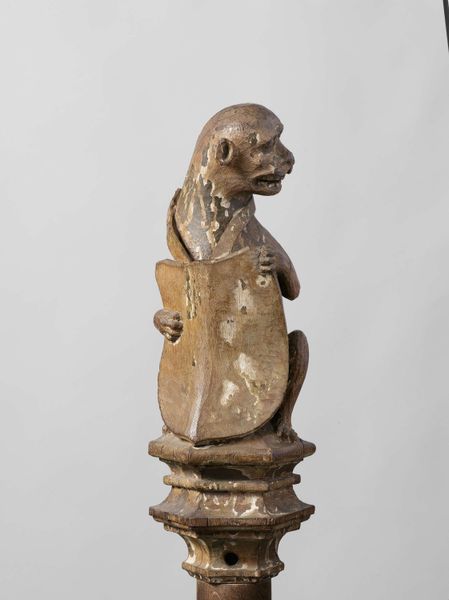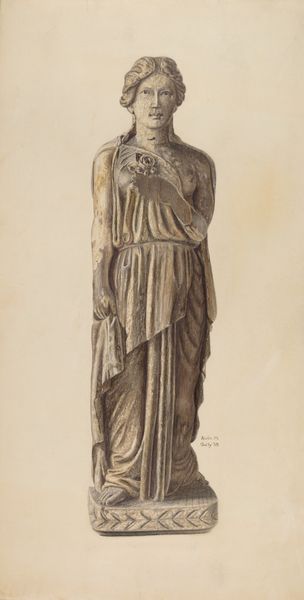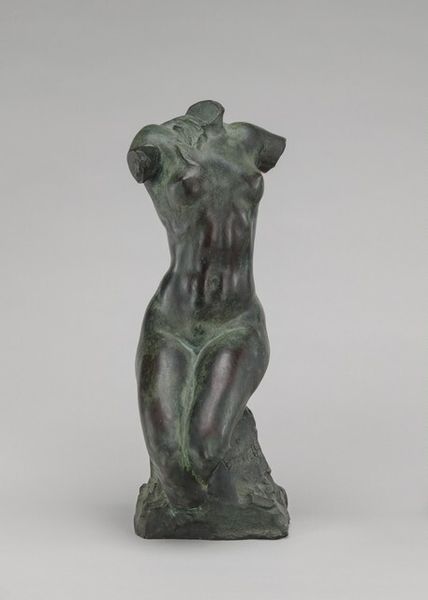
drawing, tempera, watercolor
#
portrait
#
drawing
#
tempera
#
charcoal drawing
#
figuration
#
watercolor
#
portrait reference
#
modernism
Dimensions: overall: 30.5 x 22.9 cm (12 x 9 in.)
Copyright: National Gallery of Art: CC0 1.0
Curator: Upon closer inspection, the first thing that strikes me about this image is how spectral and muted it is, the figure seeming to fade into the paper's background. What’s your immediate impression? Editor: This is “Figure” by Byron Dingman, completed sometime between 1935 and 1942. The artwork appears to be tempera, watercolor, and drawing on paper, which accounts for the almost ghostly layering of textures. Given its date, one could see this as part of the broader interest in figuration emerging from modernism. Artists looked at both traditional and non-Western imagery in response to the widespread dislocation of the period. Curator: Dislocations indeed, but how might these political upheavals be reflected within the art? Considering its muted color palette and semi-abstract approach, does Dingman perhaps employ Modernist artistic conventions to critique idealized historical representations? Editor: That is one way of reading the symbolic value. Looking at its composition, the artist directs attention to its material essence and use of varied colors—how layers of ochre, cream, gray, and muted green shape a cloaked person, perhaps with child, almost like a religious statuette. Notice too the use of charcoal drawing. It suggests an emphasis on surface quality—how the composition functions. Curator: Surface quality, yes, but in contrast to, say, pure abstraction, we have a recognizably human form. I am curious, could this interest in portraying the human form, albeit somewhat obscured, reflect anxieties about maintaining cultural memory during the turbulent interwar years? It hints at continuity even within disruption. Editor: It's interesting how you perceive continuity when I am drawn to its formal ambivalence. Note how the form struggles to emerge from its material. This artistic choice, however, transcends specific historicist or social themes; it engages viewers in visual problem-solving where surface elements work with the image, activating space and beckoning our engagement. Curator: Well, there is a case to be made that cultural memory is fluid, continually reconstructed through new aesthetic frameworks. This "Figure" resists sentimentality or direct messaging; rather, it invites introspection, allowing for individual contemplation against historical change. Editor: Perhaps. Regardless, its skillful manipulation of texture and tonality showcases its beauty and innovative approach to figuration. It's clear that despite the medium’s subtlety, the painting holds complexities within it.
Comments
No comments
Be the first to comment and join the conversation on the ultimate creative platform.
